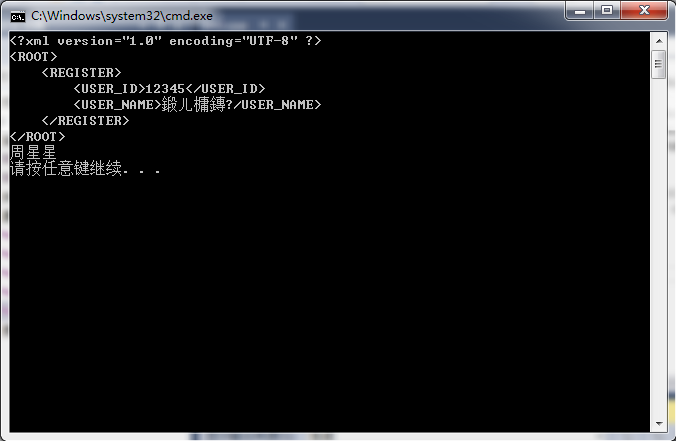Tinyxml 建立xml 並以string形式進行解析 及中文處理
阿新 • • 發佈:2019-01-09
關於Tinyxml的故事就不多說了,本文主要講怎麼利用它建立xml文件 以 xml string形式在記憶體中解析xml ,以及關於UTF-8編碼格式的XML檔案如何寫入、顯示中文字串等細節問題。
下載Tinyxml Address:http://www.grinninglizard.com/tinyxml/
文件詳解Address:http://www.grinninglizard.com/tinyxmldocs/index.html
解壓後採用VS2010進行編譯,生成 靜態庫檔案–tinyxml.lib。建立工程並將下圖六個檔案新增到工程中,同時將tinyxml.lib檔案新增到工程(也可以直接copy到工程目錄下,採用#pragma 語句進行包含連線,本文就是這種方式。):
接下來就是code:
#include "tinyxml.h"
#include "tinystr.h"
#include <iostream>
#include <string>
#include <Windows.h>
using namespace std;
#pragma comment(lib,"tinyxml.lib")
// 中文字元轉UTF-8
void MBSToUTF8(char * utf8, int size, const char* mbs)
{
if (!utf8 || !mbs)
return ;
UINT nACP = GetACP();
int 處理結果:
關於結果的幾點解釋:
1、xml 中的中文在window 視窗顯示為亂碼,完全不用驚訝,這個與資料編碼和預設開啟方式有關。如果你將該xml以UTF-8形式儲存,並以UTF-8形式開啟,完全可以正確顯示。
2、如果你將xml中 中文部分的編碼不進行UTF8ToMBS轉碼,顯示就會如1中所說的亂碼一樣。


